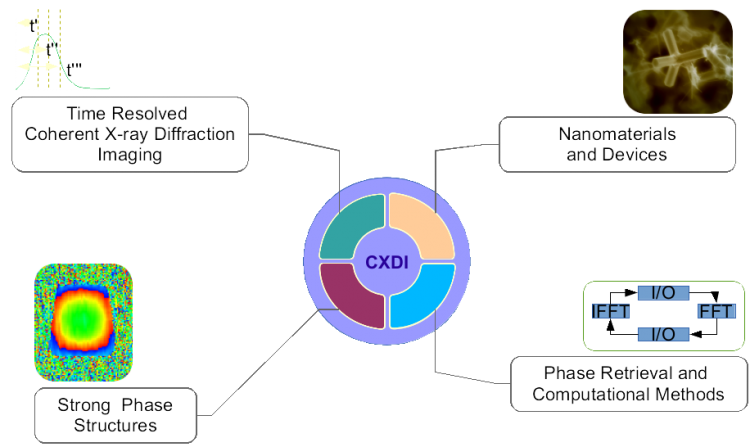Difference between revisions of "Research"
m |
m |
||
| Line 22: | Line 22: | ||
* '''Non-linear Optimisation''': Correlated electronic materials that undergo a spontaneous crystalline deformation can experience a significant strain. This can pose a challenge when reconstructing and interpreting information obtained from CXD imaging. We have previously shown that materials exhibiting strong phase structure require special optimisation methods to reconstruct the real-space object. Our group has developed the first algorithm to reconstruct data known to have strong phase structure. There are however still significant developments necessary to discover robust algorithms that are universally effective. | * '''Non-linear Optimisation''': Correlated electronic materials that undergo a spontaneous crystalline deformation can experience a significant strain. This can pose a challenge when reconstructing and interpreting information obtained from CXD imaging. We have previously shown that materials exhibiting strong phase structure require special optimisation methods to reconstruct the real-space object. Our group has developed the first algorithm to reconstruct data known to have strong phase structure. There are however still significant developments necessary to discover robust algorithms that are universally effective. | ||
| − | * '''Nanomaterials and Devices''': The increasing need to make smaller device structures with enhanced functionality has led the move away from conventional top-down lithographic approaches toward the utilisation of self-assembled nanoscale structures. The unique morphologies exhibited by many nanocrystals make them ideal for various applications including biochemical sensors, photodetectors, light emitters, transistors, high frequency oscillators, and waveguides. Our research into nanomterials and devices is centred on self-assembled metal-oxide nanocrystals which have the advantage of high chemical | + | * '''Nanomaterials and Devices''': The increasing need to make smaller device structures with enhanced functionality has led the move away from conventional top-down lithographic approaches toward the utilisation of self-assembled nanoscale structures. The unique morphologies exhibited by many nanocrystals make them ideal for various applications including biochemical sensors, photodetectors, light emitters, transistors, high frequency oscillators, and waveguides. Our research into nanomterials and devices is centred on self-assembled metal-oxide nanocrystals which have the advantage of high chemical resistance and low thermal degradance. This includes group II-VI semiconductor materials such as zinc oxide (ZnO). |
| − | resistance and low thermal degradance. This includes group II-VI semiconductor materials such as zinc oxide (ZnO). | ||
|} | |} | ||
Revision as of 10:48, 13 December 2013
| Research | People | Publications | News | Events | Wiki |
Research:
|
The research of the group can be categorised into the following topics:
|
